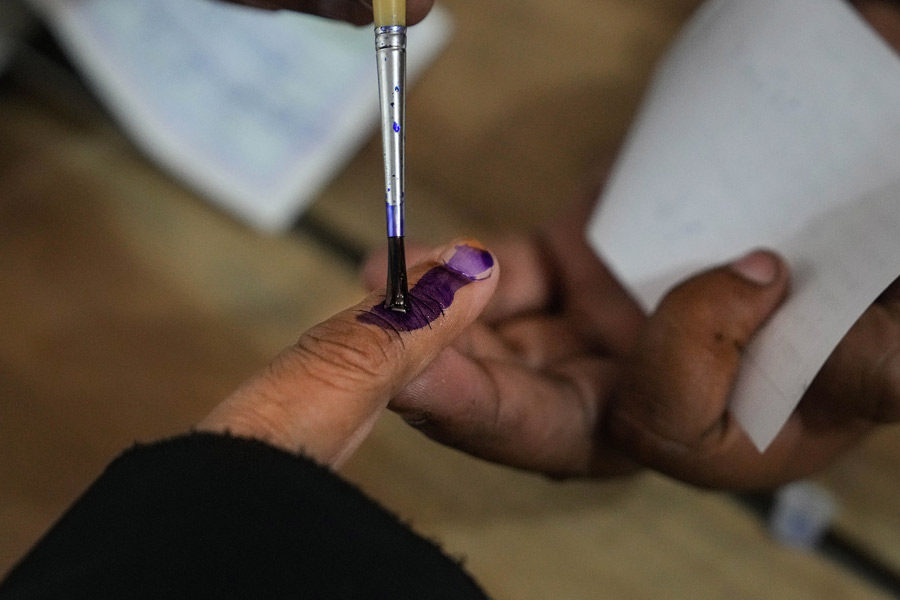The victory of Geert Wilders’ far-Right Party for Freedom in the Dutch parliamentary elections has been described as a political bombshell. It is also part of a larger European tide. Long ostracised far-Right parties bolted to the centre of political power in Italy and Sweden last year. The surging parties in Germany and France are their ideological cousins — AfD and the National Rally.
All of these parties have certain common features. They are proponents of what the political scientist, Uriel Abulof, has described as “small nation” ethnic-nationalism. In the book, The Mortality and Morality of Nations, Abulof argues that the distinctive feature of “small nation” nationalism is its perennial insecurity: a persistent sense of moral crisis and mortal insecurity. The political language employed is both intensely moral (a battle between ‘good and evil’) and existential (a battle for determining life and death, freedom and slavery).
Even though many far-Right European parties borrow certain Islamophobic tropes, Wilders is quite distinctive in defining his political agenda in terms of defending the Netherlands (and Europe) against the mortal threat coming from Islam and Muslims. He wrote the political tract, Marked for Death: Islam’s War Against the West and Me, in which he collects various accounts of death and destruction ascribed to Islam since its foundation. One can immediately sense a liberal borrowing from Hindutva historians, such as Ram Swarup and K.S. Lal (particularly, but maybe not exclusively), of passages referring to India and medieval Hindustan.
We see passages such as: “Indian historian K. S. Lal calculated that the population of India dropped from 200 million in 1000 AD to 170 million in 1500, with 60 to 80 million Indians dying as a direct result of jihad.” These claims are in-your-face and ridiculous but are meant to confer a certain evidential authority to his otherwise dubious thesis: Islam is an existential threat to the West because most Muslims consider themselves part of an ummah and are bent at world domination.
It is not surprising that Wilders’ only book in English is more of a history lesson (told from a moral-political lens) rather than a conventional ideological tract outlining a specific vision. Much like the proponents of Hindutva, Wilders uses the instrument of history to weave together a political story and legitimise myths and stereotypes (which might otherwise come across as morally abhorrent). As Ram Swarup, who supported the Rashtriya Swayamsevak Sangh, told an interviewer: “History should be presented in an interesting manner. It should be like story-telling. What do you stress upon the student is important [sic]. This is the formation stage of a child. History should be used to impress the sense of good and bad in the child. Characters in history become symbols of good and bad… Values can be transmitted only through history. History is teaching by examples. There are heroes and villains. In our history, there is Ram. Lord Ram is seen as a symbol of goodness, righteousness, sacrifice while Ravana is presented as an evil genius.”
Wilders also cultivates a considerable social media following among Indians and frequently appears on Indian television. As an aside, just as a barometer of how mainstream Islamophobia has become on Indian news television, one might compare how Wilders is treated on Western channels (such as the BBC) and on Indian channels (such as India Today). The former treats him combatively, as a figure espousing anti-Muslim bigotry; the latter is deferential towards him for being some kind of a Western expert on Islam or (inaccurately) as a critic of ‘Islamism’.
The message he conveys is pretty simple, well-encapsulated in a tweet from last year: “Please India as a friend I tell you: stop being tolerant to the intolerant. Defend Hinduism against the extremists, terrorists and jihadists. Don’t appease Islam, for it will cost you dearly. Hindus deserve leaders that protect them for the full 100%!”
Despite being the ‘biggest democracy in the world’, India finds itself deep in the grip of Abulof’s ‘small-nation nationalism’. Unlike tiny countries on the fringes of Europe (such as Hungary), we have little excuse for devoting national attention to conspiracy theories like the philanthropist, George Soros, controlling the politics of the country (and harassing reputable think tanks such as Centre for Policy Research over it). Yet, the right-wing politics of the Bharatiya Janata Party has long espoused a conspiratorial worldview of ‘good people’ and ‘shadowy enemies’. The national ascendance of the BJP means that this “paranoid style” of politics (in the words of the American historian, Richard Hofstadter) has now been woven into the country’s everyday governance. We can take the example of the political mainstreaming of the Islamophobic fantasy of ‘love jihad’, the alleged wide-ranging conspiracy of Muslim men converting Hindu women through romantic entanglements. A successful propaganda campaign mounted by the BJP’s formidable communication machinery, which has co-opted large parts of the mainstream media, has ensured that a clear majority (53%, according to an Indian Today survey) of Indians believe in the existence of ‘love jihad’. Close to a dozen BJP-ruled states have passed strictures to deal with the imaginary menace of ‘love jihad’.
Indian news television increasingly focuses its attention abroad (the last month was taken up by the Israel-Hamas conflict), partly because the political establishment prefers avoiding discussions on the economy. The ‘socio-economic’ leg of Narendra Modi’s right-wing populism which played a significant role in his two previous national triumphs remains in a feeble state. An India Today survey last year found that around two-thirds of respondents believe that their “economic condition is the same or worse since Modi came to power in 2014” and that the majority believe that the “economic policies of the Modi regime mostly benefited big businesses.” Thus, Modi has pivoted from economy to foreign policy as the locus of the government’s policy achievements. The G20 Summit has been presented as the crowning jewel of India’s national rise as Modi’s charisma leaves the familiar vikas-purush avatar (‘development man’) to the even grander persona of national redeemer. Since every redeemer needs villains, in addition to the permanent villains (Indian minorities, specifically Muslims), a revolving cast of global villains (Soros, BBC) is now being presented (who are motivated by resentment towards India’s vishwaguru status).
In the book, Communalism, Caste and Hindu Nationalism: The Violence in Gujarat, the political scientist, Ornit Shani, begins with a simple premise. How can Muslims (who form little more than 6% of Gujarat’s population) pose an existential threat to Hindus? That is, after all, the central thesis of the Hindutva ideologues on the basis of which they claim to act. Shani argues, however, that periodic communal violence in Gujarat was “rather an expression of intensifying tensions among Hindus, nurtured by changes in the caste regime and associated state policies.” These caste-based socio-economic tensions intensified in the 1980s, often resulting in riots over reservation. “The causes for the resulting uncertainties among Hindus were frequently displaced onto Muslims, thus enabling caste tensions to develop and deepen communal rivalries.”
The Hindutva universe is built around displacing all social and economic crises and contradictions on the ‘Muslim Other’ (who becomes a shared figure of hate). A century back, Hindutva intellectuals such as V.D. Savarkar borrowed from right-wing intellectuals in Europe. The symbiotic, mutual relationship between European far-Right figures such as Wilders and the Hindutva ecosystem is perhaps a testament to our vishwaguru moment as India plays a leading role in the construction and the production of global Islamophobia.
Asim Ali is a political researcher and columnist










